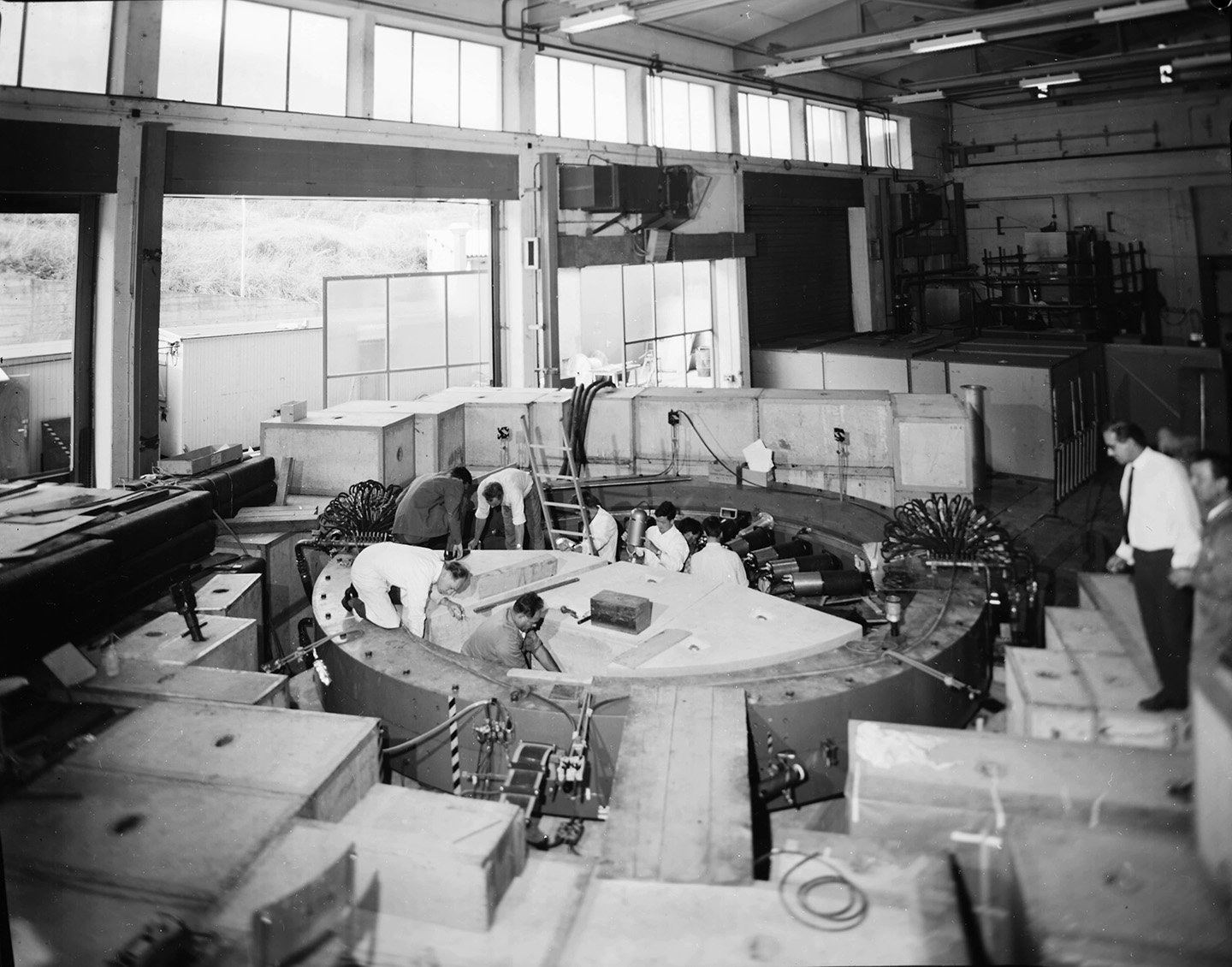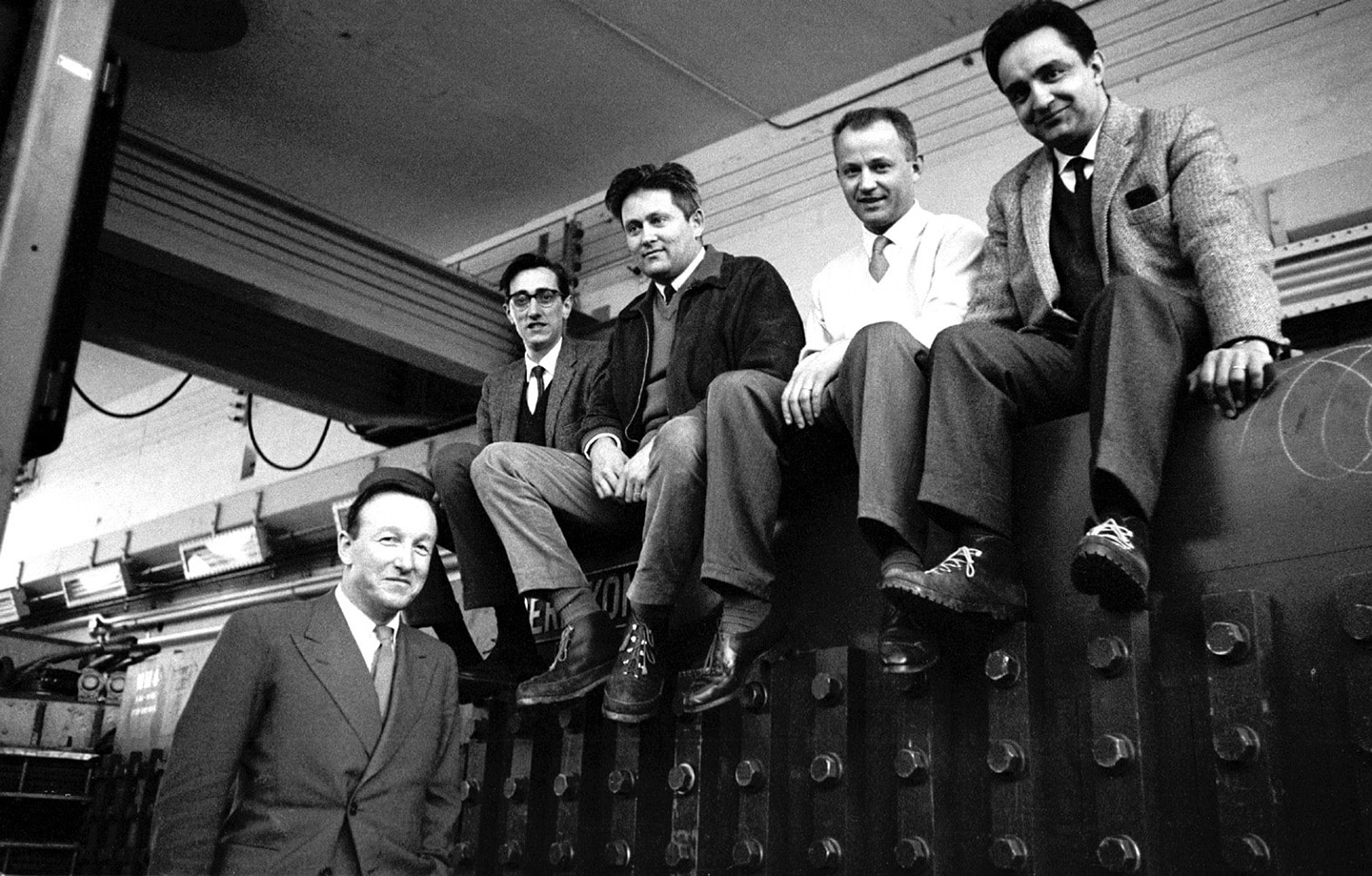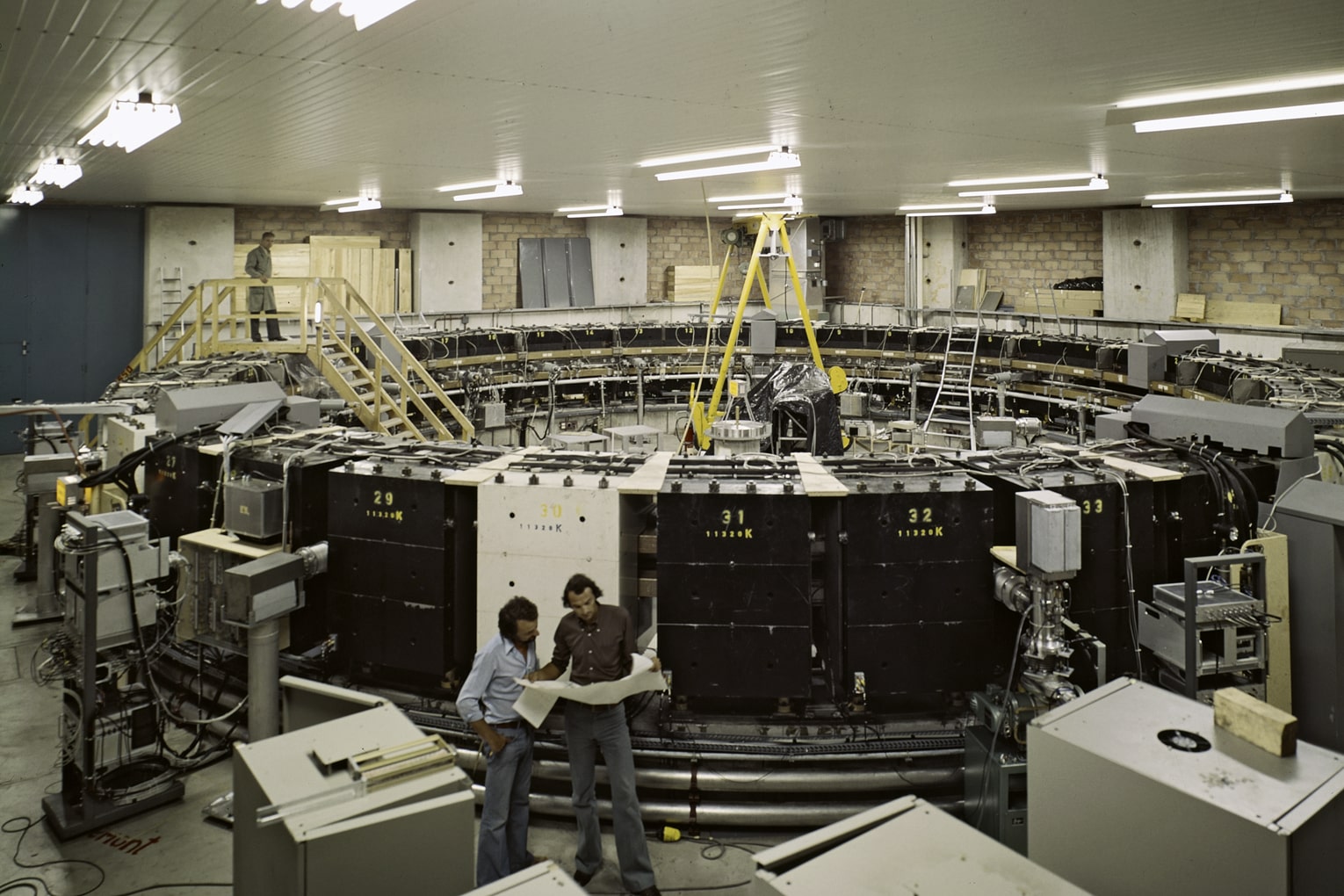CERN70: The dark side of the muon
14 March 2024 · Voir en français
Part 5 of the CERN70 feature series. Find out more: cern70.cern
Francis Farley, a British physicist, joined CERN in 1957.
This marked the start of a long and remarkable career in experiments to measure the anomalous magnetic moment of the muon

In the 1950s, the muon was still a complete enigma. Physicists could not yet say with certainty whether it was simply a much heavier electron (with 200 times the mass) or whether it belonged to another species of particle. Acting on an idea of Leon Lederman, CERN launched the “g-2” experiment in 1959, aimed at measuring one of the properties of this strange electron – its magnetic moment.
The experiment's aim was to test quantum electrodynamics, a theory elaborated in the 1940s to describe the effect of the electromagnetic force on charged subatomic particles such as electrons or muons. Among other things, it predicts an anomalously high value for the muon’s magnetic moment "g", hence the name of the experiment.
A group of six physicists – Francis Farley, Georges Charpak, Théo Müller, Antonino Zichichi, Johannes Cornelius Sens and Richard Garwin – joined forces to try and measure this famous value on the Synchrocyclotron. In 1961, the team published the first direct measurement of the muon’s anomalous magnetic moment to a precision of 2% with respect to the theoretical value. This precision was increased to 0.4% in 1962. The theory of quantum electrodynamics was validated; the muon behaved exactly like a heavy electron.
Francis Farley proposed a follow-up project at the Proton Synchrotron (PS), involving Simon Van der Meer and Emilio Picasso. Launched in 1966, the experiment produced results that were 25 times more accurate. A third experiment was launched in 1969. The final results confirmed the theory with a precision of 0.0007%!
Research into the muon's anomalous magnetic moment continued in the United States, first at Brookhaven National Laboratory and then at Fermilab, where an experiment is still under way, with increasingly precise results.
Recollections
The science I have experienced has been all about imagining and creating pioneering devices and observing entirely new phenomena, some of which have possibly never even been predicted by theory. That’s what invention is all about and it’s something quite extraordinary.
Francis Farley

Francis Farley, a British physicist who joined CERN in 1957, put together the first “g-2” experiment on the anomalous magnetic moment of the muon. In the course of his long and remarkable career, he conducted a number of experiments to measure this value with ever greater precision.
“One day I received a telegram from the magazine Scientific American asking me to send details of my experiment for an article about the Moon. As my experiment had nothing to do with the Moon, I didn’t reply. A few weeks later, however, they wrote to me again. It was then that I realised that there had been a typing mistake. They were actually asking me for information about the muon, not the Moon. At first, I had thought that there was no connection between the two, but I was wrong.
One of the great mysteries at the time of Isaac Newton was understanding how the Moon was affected by the Earth or, in other words, how gravity worked. It’s the same thing with electromagnetics. What happens between two charged particles that are attracted to each other or repel each other? This is what the theory of quantum electrodynamics explains. It holds that the electron is surrounded by a cloud of “virtual” photons that are emitted and reabsorbed. If another electron enters the cloud, photons are exchanged.

Gravitation is explained by a similar theory. Virtual gravitons are thought to be exchanged between the Sun, the Earth and the Moon. In quantum electrodynamics, the virtual photons alter the magnetic moment of the particle. If we can detect this variation, we have direct evidence that these virtual photons exist and this was the aim of our experiment.
The first article that we published, in 1961, took the world by storm, because it was the first time that the anomalous magnetic moment of the muon had been measured. As a result, the experiment served as a launching pad for group members to go on to do other things. I was the only one who stayed behind. I went on to work on the second experiment, where I met Emilio Picasso, with whom I got on tremendously well. We got a new team together and achieved much more precise measurements than with the first experiment. As our results did not tie in with theory, we started to think of ideas for a third experiment. We achieved such precision that we decided not to go any further.
The science I have experienced has been all about imagining and creating pioneering devices and observing entirely new phenomena, some of which have possibly never even been predicted by theory. That’s what invention is all about and it’s something quite extraordinary. CERN was marvellous for two reasons: it gave young people like me the opportunity to forge ahead in a new field and the chance to develop in an international environment.”
----
This interview is adapted from the 2004 book “Infinitely CERN”, published to celebrate CERN’s 50th anniversary. Francis Farley passed away in 2018, aged 97. Read more about the history of g-2 in the CERN Courier.
